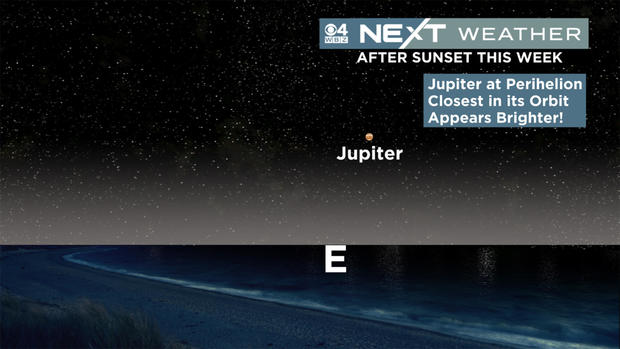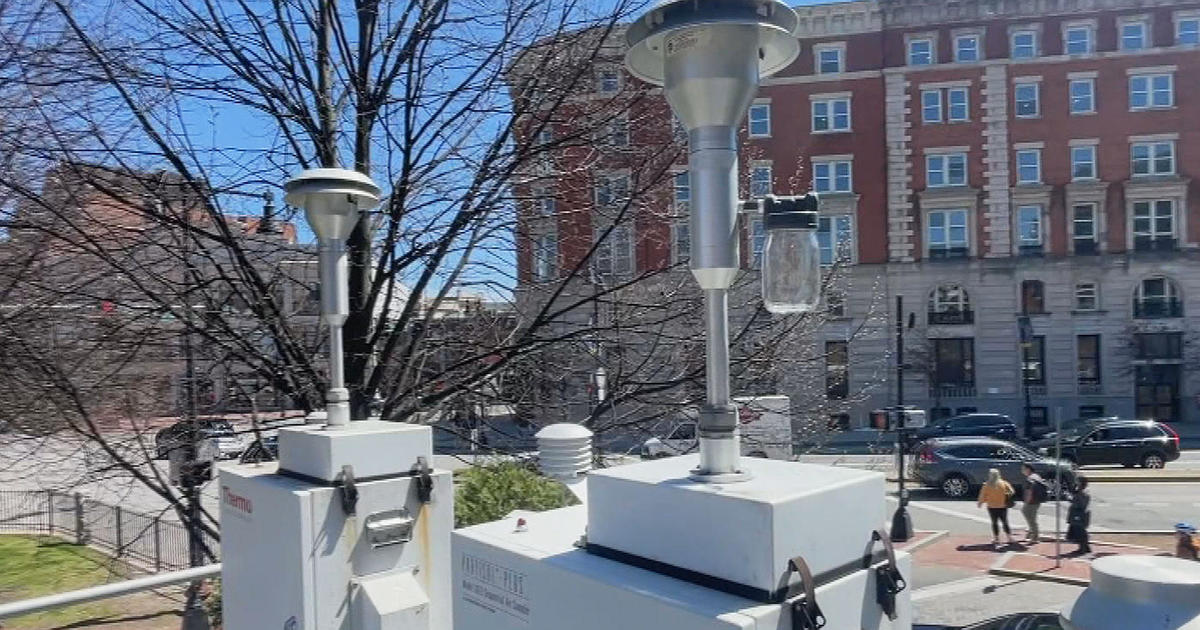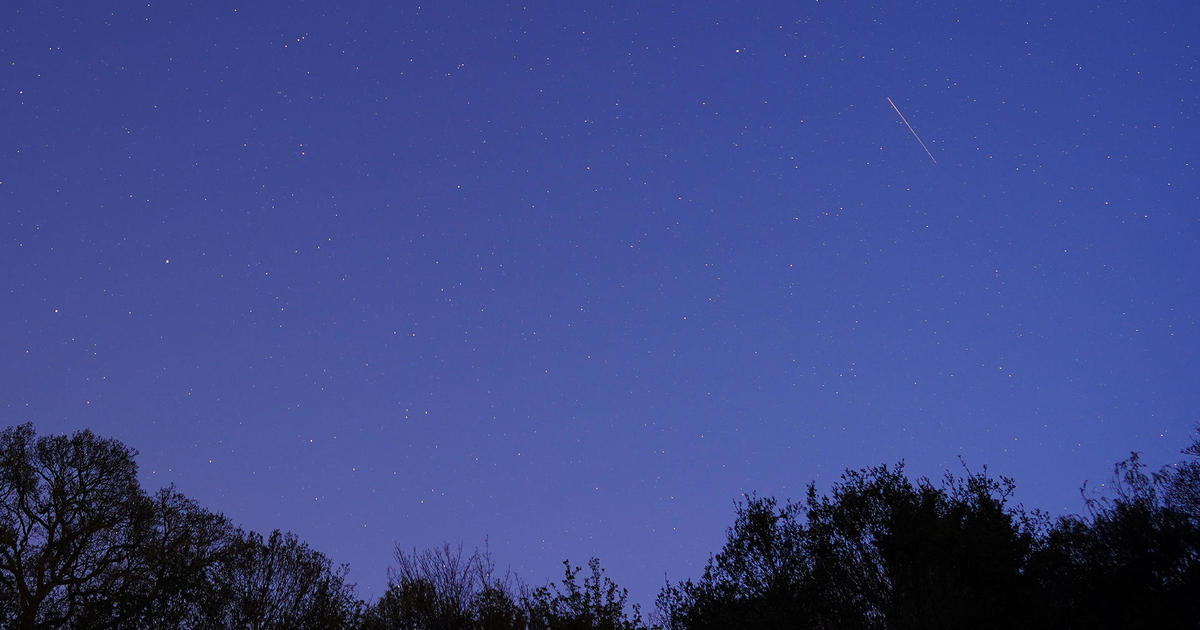How to see Jupiter as it makes closest Earth approach in 59 years
By Terry Eliasen, Meteorologist, WBZ-TV Exec. Weather Producer
BOSTON - With lots of pleasant weather and clear skies in the forecast this week, it will be a great opportunity to check out the nighttime sky. The highlight this week. . . the planet Jupiter! Jupiter is at what we call "perihelion," the period in its 12-year orbit when it is closest to the Sun.
Jupiter is currently making its closest approach to Earth since 1963. . . a mere 370 million miles or so away. Keep in mind, the Sun is about 93 million miles away, so Jupiter is still WAY out there. However, it will be close enough to appear 11% larger and 1.5x brighter than when it was at "aphelion" more than five years ago.
So how do you see this gigantic planet? It's easy! You don't need binoculars or a telescope (although those would give you even a greater view). It will appear fairly low to the eastern horizon an hour or so after sunset, but continue to rise higher with each hour. Honestly, if you have a decent view to the east, you really cannot miss it!




